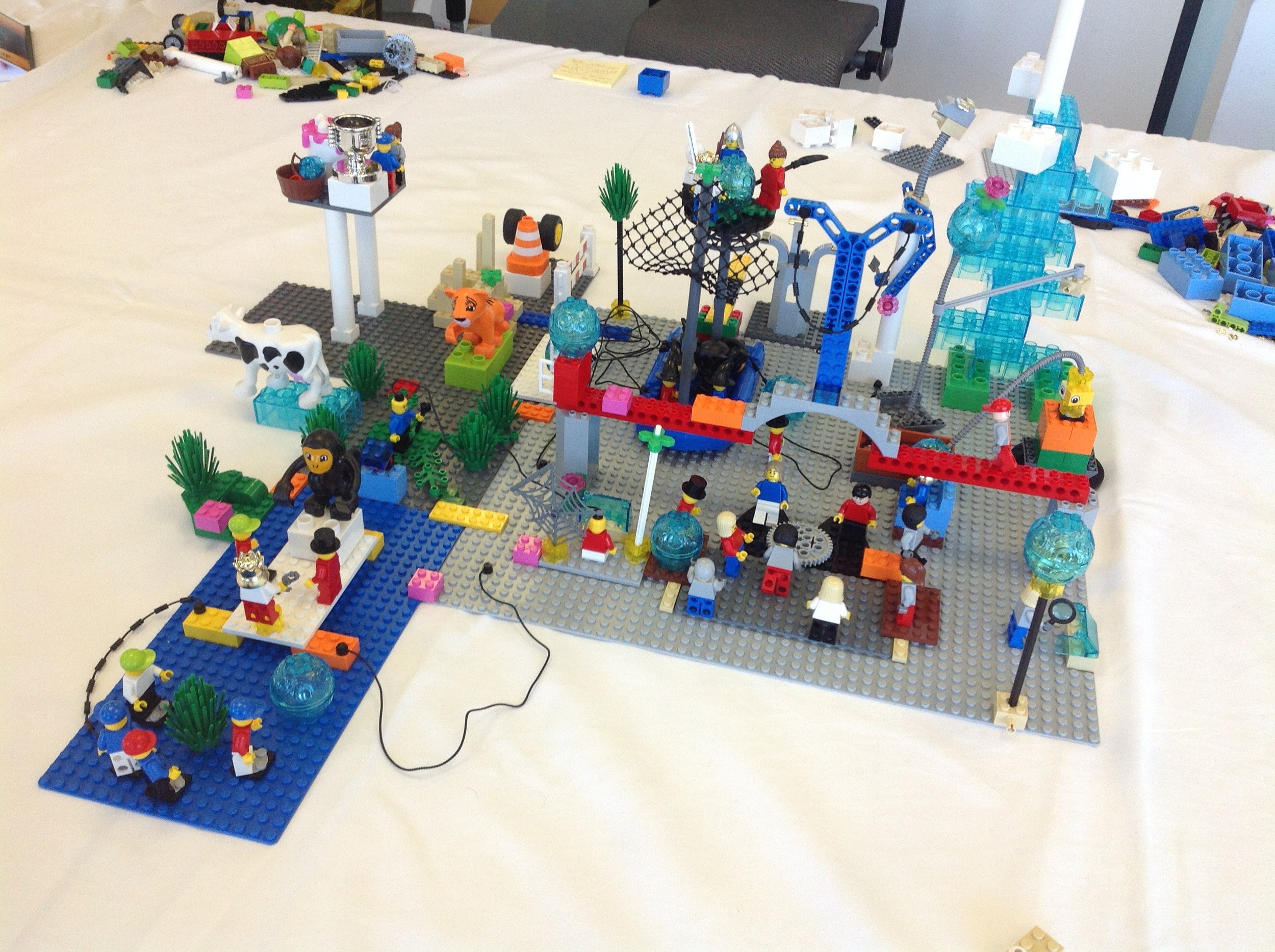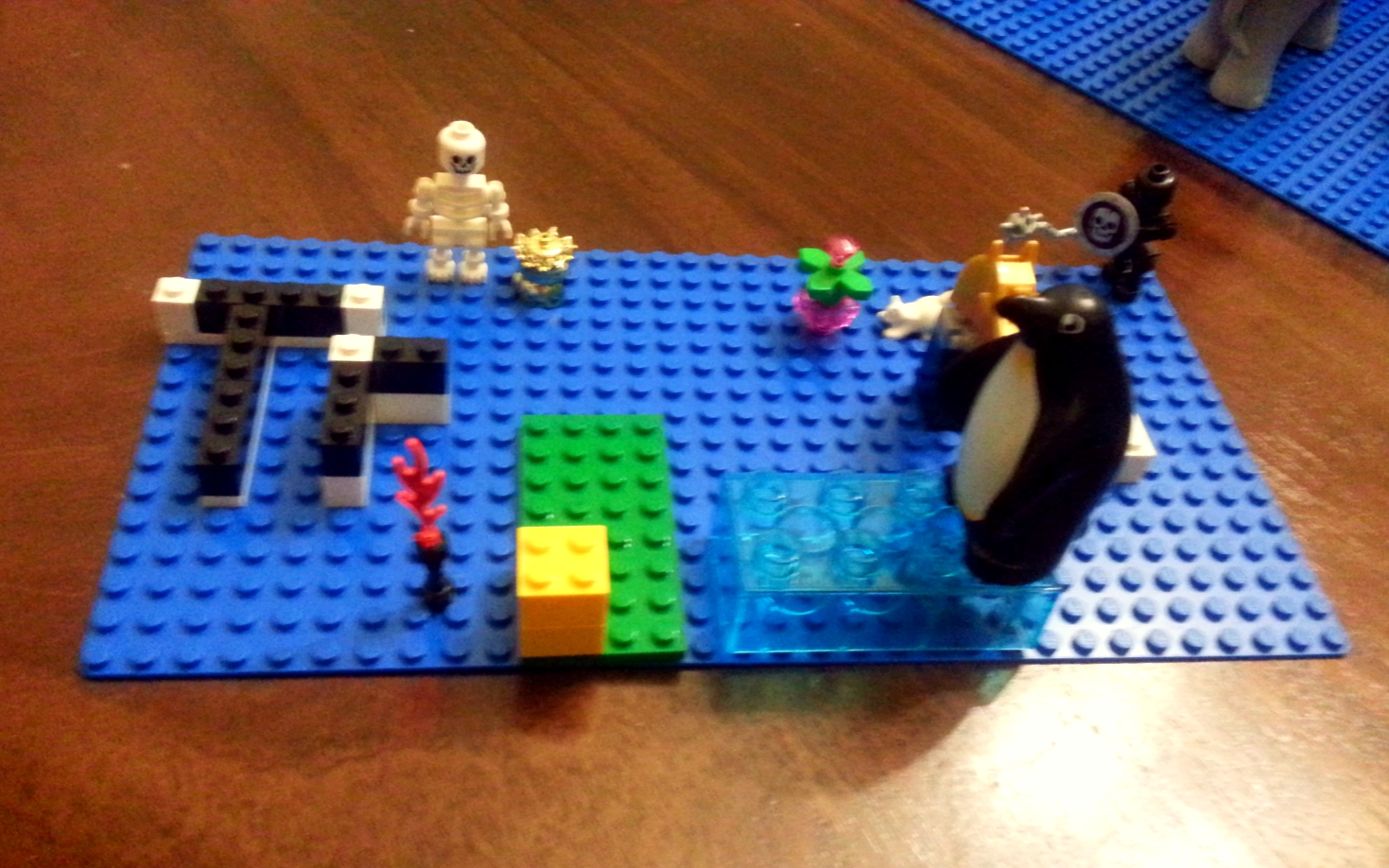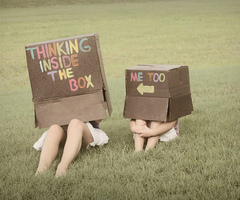The Power of Play - Joyous Surprise at the end of a Keynote Address
I gave a keynote on the Power of Play at CounterPlay15 in Denmark a few days ago. At the end of the talk, I asked the 250 participants whether they would prefer to have a Q&A or a game instead. The unanimous agreement was, "A game."
This was the result....a tangible enactment of the Power of Play to connect and energise, and a reminder that it is in Play that we develop incredible insight and agility.
Insights from a Lego Practitioner on the Power of Play
 One of the more significant challenges facing organisations is the question of how to develop effective organisational learning in volatile trading markets. In a world where questions can potentially be more powerful than answers, what does learning look like? If an agile workforce understands the importance of questions over answers, prototyping and iterating potential solutions and developing a healthy appreciation for problem finding when it comes to working on the right problem, what if anything needs to change in the way we do organisational design?
One of the more significant challenges facing organisations is the question of how to develop effective organisational learning in volatile trading markets. In a world where questions can potentially be more powerful than answers, what does learning look like? If an agile workforce understands the importance of questions over answers, prototyping and iterating potential solutions and developing a healthy appreciation for problem finding when it comes to working on the right problem, what if anything needs to change in the way we do organisational design?
 What I have observed from running strategy sessions using LEGO® SERIOUS PLAY® as a methodology is that Building requires a different starting point. Much of my work in Leadership Development has focused on reflection as the critical stance. With LEGO® SERIOUS PLAY® I have noticed something different happening. What I have found is that when one builds, one moves into a space of Play and that ego seems to fall away. What I mean by this is that due to the nature of the Lego blocks holding no inherent meaning, because one can eliminate things, break things down and rebuild, it seems to eradicate the place of judgement around oneself and ones ability to think through challenges.
What I have observed from running strategy sessions using LEGO® SERIOUS PLAY® as a methodology is that Building requires a different starting point. Much of my work in Leadership Development has focused on reflection as the critical stance. With LEGO® SERIOUS PLAY® I have noticed something different happening. What I have found is that when one builds, one moves into a space of Play and that ego seems to fall away. What I mean by this is that due to the nature of the Lego blocks holding no inherent meaning, because one can eliminate things, break things down and rebuild, it seems to eradicate the place of judgement around oneself and ones ability to think through challenges.
It is my belief that the constructionist nature of Lego helps to develop a capacity for leaders to work in a state of emergence and harness Play as a powerful driver for organisational learning.
 The answer always lies in the system you are building. Thus it creates a place for multiple perspectives to emerge and to be assessed without judgement. Doing these sessions has profoundly changed the way I view learning - I understand now from the impact I have seen in the thinking of the people I have worked with that it is not only in reflection that we learn but in Play, that we create and grow.
The answer always lies in the system you are building. Thus it creates a place for multiple perspectives to emerge and to be assessed without judgement. Doing these sessions has profoundly changed the way I view learning - I understand now from the impact I have seen in the thinking of the people I have worked with that it is not only in reflection that we learn but in Play, that we create and grow.
I will be talking about the Power of Play at the Knowledge Resources Chief Learning Officers conference in Johannesburg and giving a free talk on 25th October at Creative Mornings in Cape Town.
Play as a Design Tool for Leadership Development
 It has been shown in Australian business that only 58% goes on work that adds “real value” to organisations, with the inefficiencies costing business $109 billion in wages every year.
The figures are, I have no doubt, similar in South Africa. In fact, according to the World Competitiveness Yearbook (2012), South Africa is rated 50 amongst 59 countries. When more than half of our time is spent on solving the wrong problem, surely it is time to try a different methodology?
It has been shown in Australian business that only 58% goes on work that adds “real value” to organisations, with the inefficiencies costing business $109 billion in wages every year.
The figures are, I have no doubt, similar in South Africa. In fact, according to the World Competitiveness Yearbook (2012), South Africa is rated 50 amongst 59 countries. When more than half of our time is spent on solving the wrong problem, surely it is time to try a different methodology?
It is frequently the case that in instructional design, a ‘red thread’ or programme director is used as the touchstone of meaning making in an organisational or leadership development process. Although this a fair way to increase the sensemaking and to develop the emergent outcomes (outcomes that only begin to appear once processes and conversations have begun), it is not enough to ensure we are focusing on the right problems.
I am currently in the middle of a MOOC on Creative Learning being run by MIT and there is an insight which I want to share. Mitchel Resnick argues that the pattern of learning in Kindergarten children are ideally suited to the needs of the 21st century.
The process that he has observed in children when they learn involves six moments: 1) Imagine 2) Create 3) Play 4) Share 5) Reflect 6) Imagine (again)
With my interest in Curiosity as a critical leadership development tool and the knowledge that we often focus on the wrong problems, I decided to experiment with his insights and used this process as a basis for the design of a one day Leadership Masterclass on Agility. I have just run it in Melbourne, Australia. Here is an example of one of the sessions in the day using Play as a design tool, matching exercises I would otherwise have run in a different order now in the structure of Play:
Imagine: X BELIEVES THE WORLD WOULD BE A BETTER PLACE IF... Create: CHOOSING THE RIGHT PROBLEM TO WORK ON Play: SPEEDBOAT CHALLENGE Share: POWERFUL QUESTIONS Reflect: CHOOSE ONE TO WORK ON AND WHY Imagine: IF YOU COULD CHANGE YOUR LIMITING BELIEFS WHAT WOULD BE DIFFERENT - WALKING THINKING PARTNERSHIP
What felt different from this workshop to any other I had run was the investment by the participants and the amount of laughter it generated. Kindergarten kids laugh 250 times a day. Middle aged people laugh 15 times a day. We spend so much time trying to do everything and doing it faster and not enough time laughing, reflecting, enjoying, and focusing on the important. However, it was not only laughter it generated. Using Play as the basis for a structure really helped us get to the nub of some of the complex issues in a way which did not feel fearful. Instead it generated a depth and a focus for tackling serious problems that felt had ease and congruence.
From the experience of using Play as a design tool, it is my contention that PLAY has a profoundly important role to play when it comes to identifying, tackling and solving 21st Century problems in the world of Business, Government and Education.





